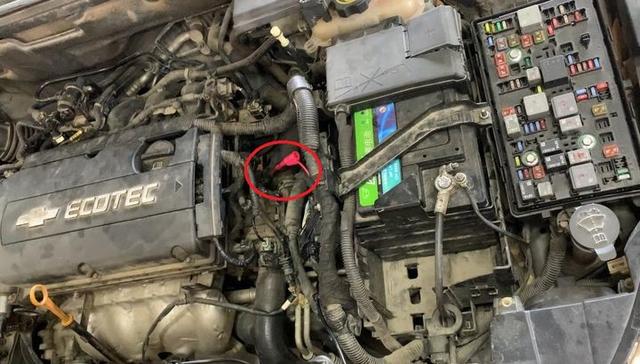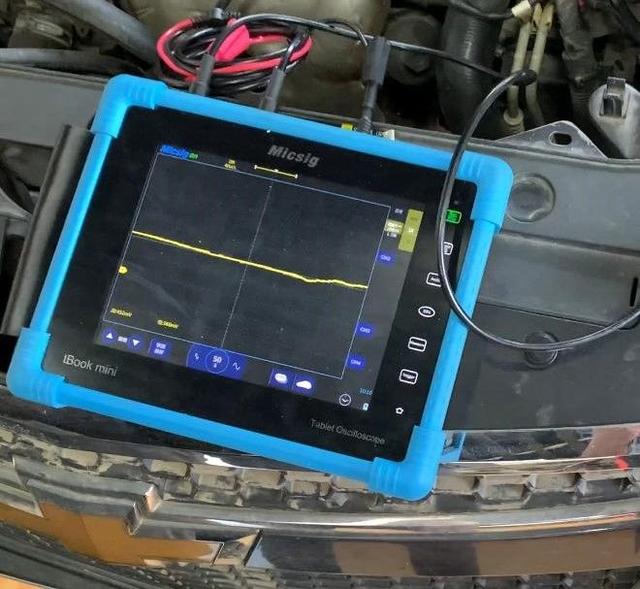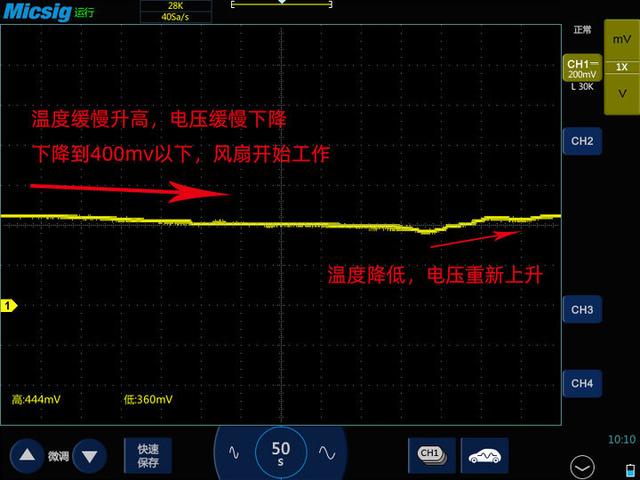The engine coolant temperature sensor is also called a water temperature sensor. Its sensor device is generally installed in the water jacket or thermostat of the engine block and cylinder head and extends into the water jacket. The function of the coolant temperature sensor is to detect the temperature of the engine coolant. The engine electronic control element ECU adjusts the injection time, ignition timing, idling speed, etc. according to the signal, and also serves as other control systems such as controlling the fan. Control signals for clutches, etc.

■Wiring method
1. Let's see how to connect the oscilloscope to the coolant temperature sensor. The coolant temperature sensor is generally divided into two lines, a power line and a grounding line.
2. We connect a BNC to banana cable to a channel of the oscilloscope. Connect a needle to the red banana head and an alligator clip to the black banana head.
3. The black alligator clip is grounded with iron, and the red needle is pierced into the power cord of the coolant temperature sensor.
4. Start the Nissan Rich car engine, then set the time base of the oscilloscope to at least 50s, and adjust the vertical scale of the oscilloscope to make the waveform in the proper position on the screen. Turn on the low-pass filter function of the oscilloscope. A low-pass 30KHz is recommended. Then wait for the waveform to change.

■Signal icon
It can be seen that the waveform signal is a process of slowly falling first and then rising again. The engine coolant temperature sensor uses a thermistor that is sensitive to temperature changes. When the coolant temperature is low, the resistance of the sensor is larger, and when the coolant temperature rises, the resistance of the sensor becomes significantly smaller.
Relying on this characteristic, the CHANA CS35 sensor can sense the change of the coolant temperature in actual use, and transmit this change to the ECU through the continuous conversion of the circuit, and the ECU will then adjust according to the input electrical signal.
As the coolant sensor signal in the above figure, as the temperature rises slowly, the voltage drops slowly. When the voltage drops to 400mV, you can see that the cooling fan starts to work. At this time, the temperature drops again and the voltage starts to rise again.
If you increase the time base and wait a little longer, you should be able to see more obvious changes. Through the waveform, it can be analyzed whether the coolant temperature sensor is working normally, whether the fan is working normally, etc.

When the engine coolant temperature is low, if the ECU does not receive a low temperature signal, then the ECU will control the fuel injection volume according to the normal temperature state, which will result in a thinner mixture concentration;
When the engine coolant temperature is high, if the ECU does not receive a high temperature signal, it will cause the mixture to become dense, which will affect the stability of the engine.
The performance of the engine coolant temperature sensor directly affects the fuel injection volume of the EFI engine, thereby affecting the combustion performance of the engine.
If the sensor is damaged, it will cause the car engine to have troubles such as difficult to start and unstable operation. If such a failure occurs, this sensor should be tested.
When the engine coolant temperature sensor has no signal or the signal exceeds the normal range, the engine ECU self-diagnosis system will identify the fault, make the engine ECU work in the set state, and store the fault code.
If only the engine temperature signal is inaccurate and the value does not exceed the set normal range, the engine ECU self-diagnostic system will not be able to recognize it.
Therefore, when detecting the engine coolant temperature sensor, it is generally necessary to measure its temperature characteristics.



